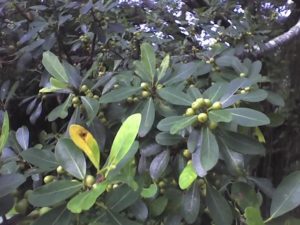
Adapted from CIFOR’s Forests News
“Before, if a woman planted Ficus, it was enough to earn you a divorce,” says Ugandan woman farmer Namanda. “That is now changing.”
Trees have strong cultural meanings worldwide. Among the Baganda people of central Uganda, the Ficus natalensis tree signifies chiefdom. In the past, when the king chose a chief, he would plant a Ficus tree for him.
At the household level, the tree signifies ownership of land. For this reason, until very recently, a woman could not plant Ficus. Husbands forbid it, because the very of act of planting would symbolize that she is the head of the household.
Although this cultural taboo is still pervasive, it is slowly changing since five years ago the Baganda started adopting a negotiation approach called Adaptive Collaborative Management (ACM), introduced by researchers under the CGIAR Research Program on Forests, Trees and Agroforestry.
ACM means that stakeholders who share an interest in a natural resource agree to act together to plan the use of this resource, then observe and draw lessons.
Scientists from the Center for International Forestry Research (CIFOR), in partnership with the Association of Uganda Professional Women in Agriculture and the Environment (AUPWAE), have used the ACM approach to implement forest-related activities in six study sites across Uganda since 2011.
This week, CIFOR and AUPWAE are presenting their findings to the Ugandan parliament’s Natural Resources Committee and the Uganda Women Parliamentarian Association. They want to obtain input on how to improve policy implementation to strengthen women’s rights and to enhance gender equity in forest decision-making. The meeting will also discuss how to scale up Adaptive Collaborative Management and to integrate it into government programs.
“Customary norms commonly mediate land and tree tenure over most of Africa, and usually limit women’s rights to land and trees even where policies and laws are supportive of women’s tenure rights,” says Esther Mwangi, Principal Scientist at CIFOR.
“This project aims at exploring what needs to be done to strengthen women’s rights especially in settings where customary norms are biased against women’s tree and land tenure.”

Coming back to Ficus natalensis. It is a multi-purpose tree that is highly suitable for agroforestry because it can be used as fodder and firewood, and as timber for furniture or boats.
Most importantly, its bark is used to produce bark cloth, which is used for traditional functions and burial ceremonies. Due to the age-old cultural taboo surrounding its planting, women were deprived of this significant source of income. But following the ACM sensitization meetings organized by CIFOR and AUPWAE, 50 out of 99 women group members have planted Ficus. Five of them have even been able to sell bark cloth and benefit economically.
Among them is Mrs. Mukwaya. “Because of confidence building acquired in the many ACM activities, I have been able to persuade my husband to allow me plant Ficus trees intercropped with my coffee and I have now started benefiting economically by selling bark cloth,” she says.
The ACM meetings are prompting more women to negotiate with their husbands to allow them to plant Ficus.
“This outcome is significan,” Mwangi says. “Ficus is turned from a tree once forbidden to women to one that women can not only plant but also sell at a profit.”
“It shows that discriminatory tenure can be turned around, and that customary norms are negotiable rather than etched in stone. Some of the lessons generated here can be used in other settings in Uganda and elsewhere.”
Concepta Mukasa, AUPWAE, indicates that obtaining women rights requires getting men’s confidence and support and this requires working together with men in all activities.
This research was supported by the Austrian Development Agency.











